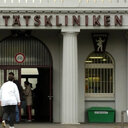Effects of plant alkylphenols on cytokine production, tyrosine nitration and inflammatory damage in the efferent phase of contact hypersensitivity.
Keywords
Abstract
OBJECTIVE
The phenolic compounds isoprenylhydroquinone glucoside (IHG), 3,5-dicaffeoylquinic acid (DCA), and its methyl ester (DCE) have previously been shown to inhibit both contact hypersensitivity (CHS) and peroxynitrite reactivity. The present work seeks to establish a relationship between the anti-inflammatory effect and the release of cytokines and tyrosine nitration in skin.
METHODS
Murine CHS was developed by means of sensitization and challenge with dinitrofluorobenzene (DNFB) or oxazolone. Ear swelling was measured 24 and 96 h after challenge. Interleukin (IL)-1beta, IL-4, and tumour necrosis factor (TNF)-alpha were measured by ELISA; and the expression of inducible nitric oxide synthase (iNOS) was detected by Western blotting. Histological samples were analysed for 3-nitrotyrosine.
RESULTS
In the oxazolone model, DCE reduced the 24 h swelling by 54% whereas the effect of DCA was lower (40% inhibition). All the test compounds reduced IL-1beta values 24 h after challenge with DNFB or oxazolone, DCE particularly inhibited IL-4 production (74% and 78%, respectively; P<0.01). Tyrosine nitration was also markedly reduced by DCE. In general, the test compounds limited the presence of polymorphonuclear (PMN) leukocytes in the skin.
CONCLUSIONS
These results suggest that the effect of 3,5-dicaffeoylquinic esters on CHS is associated with a decrease in the production of interleukins, but not with the inhibition of iNOS expression. Moreover, esterification of the carboxyl group at C-1 enhanced protection against tyrosine nitration in the skin.




